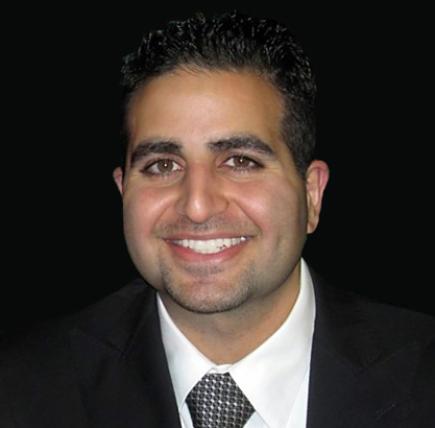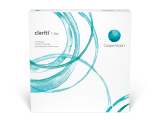Every August, the CDC seeks to heighten awareness of contact lens safety and safe practices with Contact Lens Health Week. The observance includes a social media campaign and other educational tools to inform the public of the importance of safe and hygienic lens practices. This year, Contact Lens Health Week will be observed from August 20-24.
We took some time to discuss the importance of contact lens safety in both adults and children with Dr. Mike Shaheen of Hills and Dales Vision, Inc. in Canton, Ohio. Read on for his insights into keeping contact lens patients safe and happy in their lenses.

Q: The CDC’s Contact Lens Safety Week takes place in August. What do you consider to be the greatest threat to safety in contact lens wearers and how do you address it with your patients?
I believe the greatest threat to safety for contact lens wearers has to be lens over wear and over-extending. Ultimately, this can lead to multiple problems affecting our eyes, many of which can lead to significantly decreased vision. I address this fact to patients primarily through educating them on the chain of events that occurs when you deprive the eye of oxygen, which is essential to be in contact with the front of our eyes. I explain that it is how the cells of our cornea, which do not have blood vessels delivering nutrients to them, receive their “food.” When you wear a contact lens, it reduces the amount of oxygen that touches the front of the eye. Newer lenses do allow much more oxygen to pass through them, but if you over wear or stretch past their replacement schedule, and/or excessively sleep in them, you are placing multiple barriers to this oxygen getting to that front surface. These corneal cells will change properties, allowing opportunistic infections and new leaky blood vessels to potentially cause scarring and opacities to this layer, which can lead to decreased vision. I explain about corneal ulcers and swelling that can occur, and how if the location of these happens centrally, it can significantly impede their vision. This safety week is wonderful because it raises potential awareness to contact lens wearers that may believe things are “no big deal”.
Q: Do you consider contact lenses to be a safe option for children? Why?
Absolutely*. Note the asterisk! I am a proud proponent of contact lens wear as an option for children, and I think they have many benefits, including the potential to slow down the progression of myopia. That being said, children (and parents) have to be responsible enough to follow care and wear guidelines and use proper hygiene for their care. Contacts can boost confidence in children, are wonderful for sports, and can positively impact a child’s life as long as proper care is observed.
Q: How do you reinforce safe contact lens practices with patients in your practice?
Education is key for establishing and reinforcing safe contact lens practices with my patients. We repeatedly go over correct contact lens replacement and hygiene guidelines with every patient encounter. Additionally, we offer free contact lens cases to encourage replacement of their old ones, and have a recycling collection for their old cases.
Q: What strategies do you use in your practice for encouraging contact lens patients to return for timely exams each year?
Again, education is key. We take the time to educate the patient on the length of time that any particular purchase they make should last with proper use and care. I explain that after a year, the shape and parameters of the eye can change to the point where we may need to adjust the power and fit of the contact lens. Much like one’s shoe or belt size could change slightly from year to year, the eyeball may need updated measurements to ensure proper contact lens fit. If this is not updated or measured, and a contact lens fit isn’t optimal, it can lead to vision and eye health issues. We make this known as part of our fitting, and only write prescriptions that are valid for one year.
Q: How important is purchasing an annual supply (or adequate quantity to cover them until their next visit) to patient safety throughout the year?
This is a very important link to safety in my eyes (no pun intended). If a patient purchases an annual supply, it significantly increases compliance. When a patient has an adequate amount of contacts they will typically not try to stretch them. When a patient doesn’t have enough contacts to last until they need to re-buy, they’re more likely to over wear them.
Q: How does your practice approach annual supply sales?
We try to make it as organic as possible. We don’t employ high pressure sales tactics, gimmicks, or lies. We explain their allowances if they have benefits, the cost of the contacts, and also which, if any, rebates are available. We also educate them on what minimum purchase requirements they may need to meet before receiving any available rebates, and many rebates are substantial with an annual supply purchase. This allows the patient to then make an informed decision on what is right for them, and in many cases an annual supply makes sense for them.
Q: What patients do you consider to be at most risk for contact lens complications?
College students pose the highest risk in my mind. Typically, these students are trying to save money as much as possible by stretching how long they replace lenses. Additionally, they tend to stay up late, either studying or partying (or both), and have long periods of computer use, which tends to lead to drier eyes. All of these lead to increased risk for potential complications.
Q: As a profession, how can optometry continue to improve patient compliance and protect contact lens patients from adverse effects?
This takes me back to my belief that this Contact Lens Safety Week is an amazing opportunity and template that can be replicated on a smaller scale locally. We have to find more vehicles/events/occurrences like this to be able to spread the word and educate patients on these issues. I believe that dentistry has built an excellent foundation for understanding compliance and when to get their examinations. I remember in grade school having to learn the correct way to brush our teeth, beginning at a young age. Surprisingly, patients don’t always know that eye exams are recommended annually. This is why I believe that programs to encourage volunteering in the schools and mottos like “check yearly, see clearly” are wonderful. We need to continue to educate, repeat our message in any outlet that we can such as social media, television, radio, word of mouth, during exams – any time that we can.
More information can be found on the CDC’s web site here.





